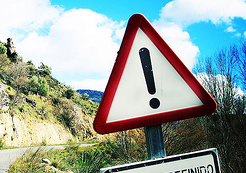Q: Can I identify my organization’s next crisis? If so, how?
A: Jim Satterfield- Undoubtedly, yes. Knowing what the next crisis might be is a way to think about planning and information. There are warning signs and indicators when we discuss human behavior. Understanding behaviors of concern and identifying them earlier in the process is imperative. It provides an idea of the frequency and severity of a situation.
If we can see those indicators, if we can identify those behaviors, then we can intervene before they become a problem. Sometimes, they are business or financial indicators; sometimes, it’s just human behavior.
On 9/11, I was EVP and chief operating officer of a public technology firm with employees in the States and around the world. When the first plane hit the first tower, we thought it could have been an accident. When the second plane hit the second tower, clearly not an accident. We called a meeting in our boardroom and, while sitting around the table, decided it was a day unlike any that we’ve ever seen.
Our management team decided it would be better to let everybody go home. I turned to our HR director and said, “Could you send a global email out to everybody in the company telling them they could just go home”? She went back to her desk, and she typed this message: “If you want to live, leave.”
The intended message was to be: “If you want to leave, leave.” Those are two entirely different messages. “If you want to live, leave.” “If you want to leave, leave.”
Thinking about your messages when you’re not under stress is very, very critical, and planning makes a difference.
Q: I already have a detailed and updated copy of our organization’s crisis plan. Do I need to have a digital copy, as well?
A: Jim Satterfield- Unless you’re planning to add a psychic on your crisis management team, it’s not going to do you any good to have an outdated or out-of-reach plan. Keeping your plans current and available is crucial. If you can’t get access to the right information at the right time, it’s not going to do you any good. “Oh, the plan’s back in the office, and I’m at home.”
Speed is quality. Getting the right answers to the right people at the right time becomes a critical element in every crisis.
Q: What should my organization’s key messages be to each stakeholder group for vulnerabilities and threats?
A: Jim Satterfield- What we’re going to say internally will be different than what we’ll say externally. Think about who your stakeholders are. If you’re in a business that’s heavily regulated, you have regulators as a stakeholder group. You have employees and investors, as well. If a school, you have parents, students and possibly church affiliation. You have various elements to be dealt with, and that makes a difference in approach.
Q: What resource can help with quick decision-making?
A: Jim Satterfield- What you do is list in one column things that could happen, things that could damage:
- The facility
- The employees
- The data
- The brand
- The reputation
Across two more columns, we indicate what would qualify as a minor event and what is considered a crisis. You then include descriptive terms and circulate it to the entire company.
Immediately, when something comes up, refer to the matrix. If an employee is injured, but did not receive emergency treatment, it remains a minor event. If the employee had to have some medical attention, it rises to the next level. If an employee dies, that’s crisis. It’s at the highest level that management would want to be involved, so creating an event activation matrix is the fastest way to get that quick response with everyone on the same page at the same time.
Q: What are common mistakes people have made during a crisis?
A: Jim Satterfield- These are the five failures that we see over and over and over again in a disaster or crisis:
About 70% of employees don’t know what they’re supposed to do in a disaster or a crisis. In addition, 95% don’t have a disaster plan at home. If something happens in your area, and you think your family is at risk, family wins. That’s why people don’t show up in a crisis, because they’re concerned about their family.
We work on these failures through our Predict/Plan/Perform process. First, identify groups. Then conduct exercises and establish how you’re going to monitor and communicate. When you think about your individual plans, think about them in light of these groups. You need to build preparation in from all of these groups that could ultimately be a problem within the organization.
Q: Are school students classified under workplace violence?
A: Jim Satterfield- Yes, because it’s a workplace. The school is a workplace, yes.
Q: Prevention is rare in organizations that have small staffs. Have you found organizations are willing to assign staff to conduct social media monitoring on their time?
A: Jim Satterfield- They can, or you can use an outside service that will do it for you. This route is much more cost-effective. Why? Because that’s the specialist’s full-time job.
Whatever your full-time job is, you’re good at that job. If you only do something every now and then, you’re not going to be as good, and you may miss an important signal or piece of information.
We are finding organizations -- both large and small -- are conducting monitoring as a preventative measure, and we conduct such intelligence gathering for a number of clients.






